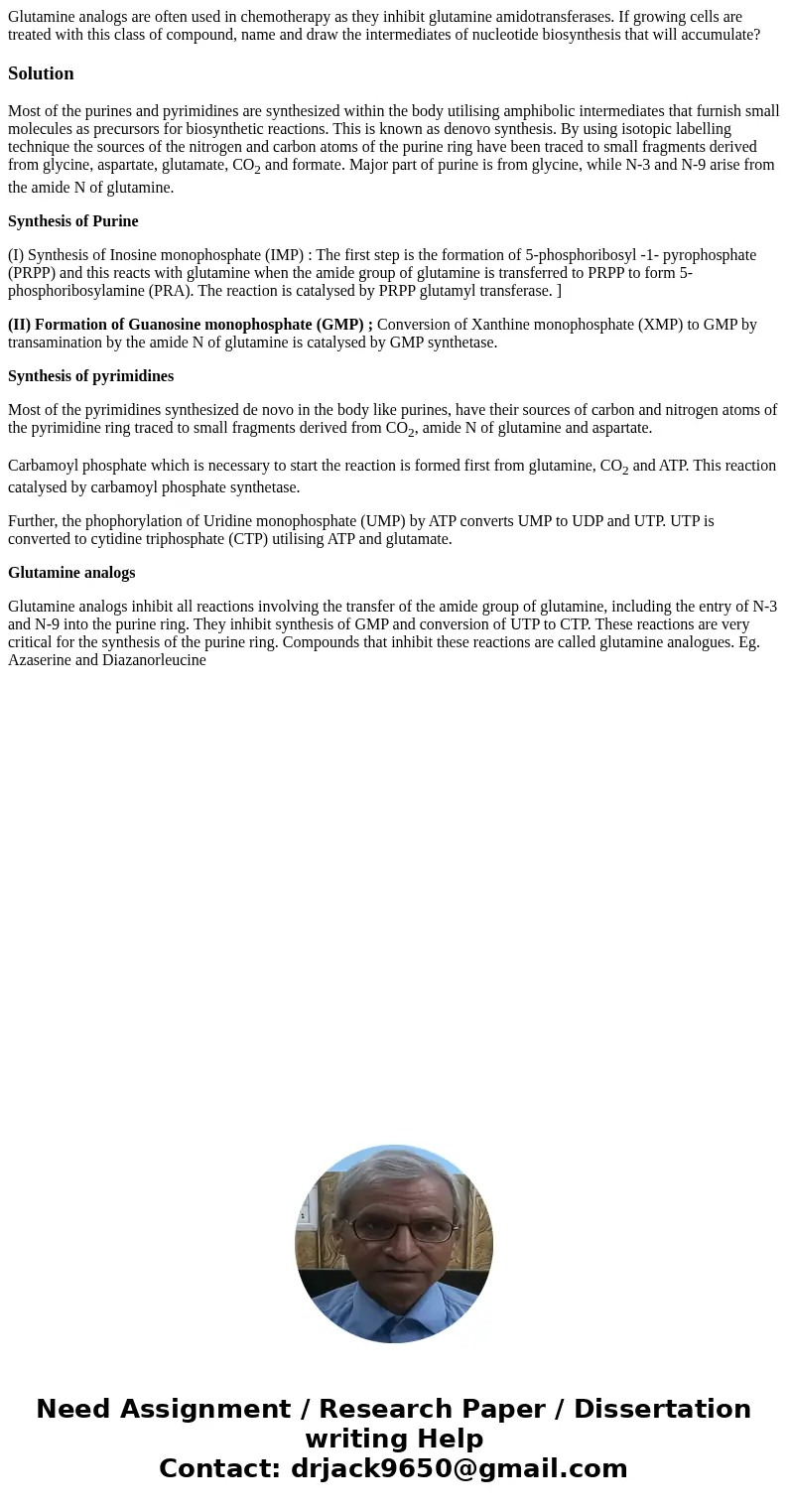Glutamine analogs are often used in chemotherapy as they inh
Glutamine analogs are often used in chemotherapy as they inhibit glutamine amidotransferases. If growing cells are treated with this class of compound, name and draw the intermediates of nucleotide biosynthesis that will accumulate?
Solution
Most of the purines and pyrimidines are synthesized within the body utilising amphibolic intermediates that furnish small molecules as precursors for biosynthetic reactions. This is known as denovo synthesis. By using isotopic labelling technique the sources of the nitrogen and carbon atoms of the purine ring have been traced to small fragments derived from glycine, aspartate, glutamate, CO2 and formate. Major part of purine is from glycine, while N-3 and N-9 arise from the amide N of glutamine.
Synthesis of Purine
(I) Synthesis of Inosine monophosphate (IMP) : The first step is the formation of 5-phosphoribosyl -1- pyrophosphate (PRPP) and this reacts with glutamine when the amide group of glutamine is transferred to PRPP to form 5-phosphoribosylamine (PRA). The reaction is catalysed by PRPP glutamyl transferase. ]
(II) Formation of Guanosine monophosphate (GMP) ; Conversion of Xanthine monophosphate (XMP) to GMP by transamination by the amide N of glutamine is catalysed by GMP synthetase.
Synthesis of pyrimidines
Most of the pyrimidines synthesized de novo in the body like purines, have their sources of carbon and nitrogen atoms of the pyrimidine ring traced to small fragments derived from CO2, amide N of glutamine and aspartate.
Carbamoyl phosphate which is necessary to start the reaction is formed first from glutamine, CO2 and ATP. This reaction catalysed by carbamoyl phosphate synthetase.
Further, the phophorylation of Uridine monophosphate (UMP) by ATP converts UMP to UDP and UTP. UTP is converted to cytidine triphosphate (CTP) utilising ATP and glutamate.
Glutamine analogs
Glutamine analogs inhibit all reactions involving the transfer of the amide group of glutamine, including the entry of N-3 and N-9 into the purine ring. They inhibit synthesis of GMP and conversion of UTP to CTP. These reactions are very critical for the synthesis of the purine ring. Compounds that inhibit these reactions are called glutamine analogues. Eg. Azaserine and Diazanorleucine

 Homework Sourse
Homework Sourse